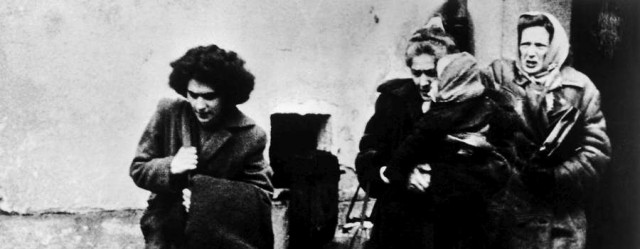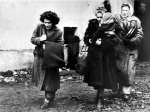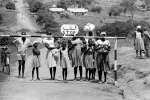History of UNHCR

A Global Humanitarian Organization of Humble Origins
The UN refugee agency emerged in the wake of World War II to help Europeans displaced by that conflict. Optimistically, the Office of the United Nations High Commissioner for Refugees was established on December 14, 1950 by the United Nations General Assembly with a three-year mandate to complete its work and then disband. The following year, on July 28, the United Nations Convention relating to the Status of Refugees - the legal foundation of helping refugees and the basic statute guiding UNHCR's work - was adopted.
By 1956 UNHCR was facing its first major emergency, the outpouring of refugees when Soviet forces crushed the Hungarian Revolution. Any expectation that UNHCR would become unnecessary has never resurfaced. In the 1960s, the decolonization of Africa produced the first of that continent's numerous refugee crises needing UNHCR intervention. Over the following two decades, UNHCR had to help with displacement crises in Asia and Latin America. By the end of the century there were fresh refugee problems in Africa and, turning full circle, new waves of refugees in Europe from the series of wars in the Balkans.
The start of the 21st Century has seen UNHCR helping with major refugee crises in Africa, such as the Democratic Republic of the Congo and Somalia, and Asia, especially the 30-year-old Afghan refugee problem. At the same time, UNHCR has been asked to use its expertise to also help many internally displaced by conflict. Less visibly, it has expanded its role in helping stateless people, a largely overlooked group numbering millions of people in danger of being denied basic rights because they do not have any citizenship. In some parts of the world, such as Africa and Latin America, the original 1951 mandate has been strengthened by agreement on regional legal instruments.
In 1954, the new organization won the Nobel Peace Prize for its ground-breaking work in helping the refugees of Europe. Its mandate had just been extended until the end of the decade. More than a quarter century later, UNHCR received the 1981 award for what had become worldwide assistance to refugees, with the citation noting the political obstacles facing the organization. From only 34 staff members when UNHCR was founded, it now has more than 9,300 national and international members of staff, including over 1,050 in UNHCR's Geneva and Budapest Headquarters. The agency works in 125 countries, with staff based in 109 main locations such as regional and branch offices and 341 often remote sub-offices and field offices.
The budget has grown from US$300,000 in its first year to US$7 billion in 2015. At the start of 2014 there were more than 51 million uprooted people worldwide. In mid-2014, meanwhile, UNHCR was dealing with 46.3 million people of concern to the agency: 26 million internally displaced people, 13 million refugees, 1.7 million returnees, 3.5 million stateless people, more than 1.2 asylum-seekers and 752,000 other people of concern. An organization with a three-year mandate to solve the problem of refugees celebrated its 60th anniversary on 14 December 2010, aware that the humanitarian needs are unlikely to disappear. Since that landmark birthday, UNHCR has been faced with multiple crises in Africa and Europe.





























